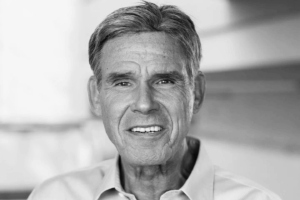The Future of Longevity: 5 Breakthroughs Redefining Aging Right Now

Two 98-year-olds, one groundbreaking perspective. Dr. Eric Topol reveals the five forces reshaping how we age, and why healthspan is the new lifespan.
What does it really mean to live better, longer? In this excerpt from the opening chapter of Super Agers, Dr. Eric Topol introduces us to two of his real-life patients in their late 90s; one thriving with minimal intervention, the other a product of modern medicine’s most advanced tools. Together, their stories lay the foundation for a new understanding of healthspan. What follows is Topol’s powerful argument for a multidimensional model of longevity, combining cutting-edge science with deeply human care.
Excerpt of Super Agers
Meet my patient Mrs. L. R. She’s ninety-eight years young and has never suffered a day of serious illness in her long life. She was referred to me by her primary care physician to assess her heart condition because she had developed swelling in her legs, known as edema. When we first met in the clinic, I noted there was no accompanying family member, so I asked how she got to the medical center. She’d driven herself. I soon learned much more about this exceptionally vibrant, healthy lady who lives alone, has an extensive social network, and enjoys her solitude.
Her remarkable health span isn’t shared by her family members. Her mother died at age fifty-nine; her father at sixty-four. Her two brothers died at ages forty-three and seventy-five. Three years prior to our meeting, her husband had died at age ninety-seven. He had also been quite healthy, with a similar health span profile in contrast to his parents and siblings, who all had chronic diseases and died decades younger. Following her husband’s death, Mrs. L. R. got depressed and dropped thirty pounds. She lost her interest in her hobbies of painting and doing one-thousand-piece jigsaw puzzles. She did continue to play cards and Rummikub every week with a circle of eight women. One of these friends suggested she move from the house she’d lived in for decades to a senior residence apartment. The move led her to artists, new friends, and an extended social network. This all brought her back to her “old” self, fully restoring her passion for her award-winning oil painting, and doing puzzles too. I met a woman brimming with optimism with a sunny disposition and an easy laugh.
The consultation needed to determine why she had some leg edema. Although she had no history of high blood pressure, her heart was thickened on my smartphone echocardiogram and her heart muscle function was well beyond the normal range. Her ejection fraction, the proportion of blood squeezed out of the main pumping chamber with each beat, was abnormally high. I diagnosed hypertrophic cardiomyopathy of the elderly, coincidentally a condition that I had described years before in the New England Journal of Medicine. Her heart had become stiffened and had difficulty relaxing. This accounted for the leg edema, the treating of which was straightforward. The leg edema cleared, and she has remained without symptoms.
Mrs. L. R. exemplifies healthy aging. She is the unusual individual who has escaped all the common age-related diseases, a resilience that defies what most of us expect from the human aging process. Her extreme health span and longevity, as well as her husband’s, do not appear to be related to genetic makeup. Medical scientists don’t understand it, but they would conclude, from all we know about the biology of aging and process of elimination, that it’s stochastic, a random stroke of good fortune.
In marked contrast, let me briefly introduce another patient of mine whom I have followed for over thirty years, who is now also ninety-eight. At age seventy-five, following coronary artery bypass surgery at age sixty-two, Mr. R. P. presented with angina. At the time, I placed two stents in one of his bypass grafts that had developed blockages, which stem from buildup of atherosclerosis that limits blood flow. He later developed rapid atrial fibrillation resistant to medications and underwent two ablation procedures to maintain a normal heart rhythm. Many years subsequently, he had a shoulder replacement and sustained a small heart attack postoperatively. At age ninety-six, he was hospitalized with COVID pneumonia and, despite a prolonged hospitalization, did not develop respiratory failure and fully recovered.
Mr. R. P. represents the triumphs of modern medicine. He had severe atherosclerotic cardiovascular disease, but with repeated restoration of blood supply to his heart and aggressive secondary prevention treatment, all was well. He embodies the medical progress we’ve made with age-related diseases. What’s exciting now is that we can accurately forecast heart disease as well as the other major diseases of aging in high-risk individuals many decades earlier and achieve primary prevention, or, at the very least, a marked delay in their appearance. Doctors can’t promise to reverse or halt aging itself, but we can promise the second half of our lives can be much healthier than our forebears’. This is the type of health span extension that we will be seeing far more commonly in the future owing to the phenomenal advances in the five dimensions I highlight throughout this book.
The Five Dimensions
1. Lifestyle+
Allow me to explain. We’ve known for a long time that lifestyle factors—diet, exercise, and sleep—play an important role in health span. But that knowledge has greatly expanded to what I call the dimension of “lifestyle+” because it now includes broadly defined environmental exposures. Being outdoors in nature, pollution, social determinants of health including loneliness, specifics of physical activity including strength, and precision dieting including time-restricted eating are all aspects of lifestyle+. The clich. “The devil is in the details” is particularly fitting.
2. Cells
The latest understanding of the nearly thirty-seven trillion cells in our body offers an entirely new range of insights. Each week researchers are publishing new work involving molecular sequencing, determining the genetic material of hundreds of thousands to millions of single cells. We understand not only their workings across time and space but also how we can manipulate and rebuild them. This changes everything. T cells can be taken out of our body and engineered to substantially rev up our immune response to cancer, or alternatively to suppress a self-directed immune response. We are making that process faster, cheaper, and simpler by transforming a person’s own immune cells inside their body. We can take an organ from another species, a heart, say, edit the genes that provoke an immune response, and potentially solve the dearth of human donor organs. We can change a person’s white blood cells into stem cells and then make, for instance, pancreatic cells that produce insulin. We can even grow cells in a dish into beating, multichamber hearts—or even brains. These organoids can preview how a person’s brain will respond to a treatment for cancer or neurologic conditions.
3. Omics
Within our cells and body tissue there are many layers of biologic information that have become known collectively as omics. This term originated with the study of our genome, comprised of three billion DNA letters. The other principal layers include our RNA, proteins, epigenetics (the packaging of our genome), and microbiome. In aggregate, this rich set of biological data is critical to defining our uniqueness as individuals and lays the foundation for individualized medicine.
The advances in omic science are stunning. By sequencing our DNA, we can identify common and rare gene variants that tell us about risks of major diseases well beyond our family history. Detecting tumor DNA in the plasma portion of the blood, known as a “liquid biopsy,” can enable early diagnosis and treatment of cancer; abnormal proteins or RNA can indicate the beginning of a neurodegenerative disease or the earliest sign of preeclampsia. A cluster of proteins in our plasma can tell us about the aging clock for each of our organs. The microbiome of our gut is busy sending signals to our brain and shaping our immune response.
4. Artificial Intelligence
Artificial intelligence (AI) is starting to play a pivotal role in preventing agerelated diseases. We’re seeing how—across all dimensions—it can precisely determine a person’s risk for specific conditions and provide actionable steps and interactive coaching. Multimodal AI integrates layers of data—electronic health records, labs, images, omics, exposure to pollution, social determinants of health, and state-of-the-art medical knowledge—to build personal medical forecasts. Virtual medical coaches have been a fantasy of primary disease prevention for decades, though it is still not yet a reality. However, Thrive AI Health, a joint initiative between Open AI and Thrive Global, may be on the way to making that dream come true.
5. Drugs/Vaccines
New drugs and vaccines are being rapidly developed because we can now predict the atomic shape of more than two hundred million proteins. You’re probably familiar with generative AI’s propensity to hallucinate. But that’s a good thing when you exploit this bug/feature to discover new proteins that don’t exist in nature and may fulfill big unmet needs in medicine. Guess where Ozempic and Wegovy came from. AI didn’t invent these man-made peptides out of thin air; their discovery was based on the naturally occurring ones that circulate at low levels in our bloodstream. These and other glucagon-like peptide-1 (GLP-1) drugs have far exceeded all expectations beyond the treatment of obesity and diabetes, improving the outcomes of heart attacks, strokes, heart failure, liver, and kidney disease—and more to come. New technology developed for COVID vaccines is now being successfully applied to a broad range of diseases, including cardiovascular and cancer. We now have drugs that take immune therapy against cancer to a new level, combining highly targeted chemotherapy to avoid noxious side effects. Vaccines to supercharge our immune response against cancer are taking hold, and the flip side, to block the immune system in autoimmune diseases. For the first time, after failing for many decades, we are seeing drugs for neurodegenerative diseases.
All five dimensions interact with one another. Our lifestyle factors influence our microbiome and cells. Our response to drugs and vaccines is modulated by our genomics and cells, and discovery of new drugs has been enhanced by gene variants and by AI. We’ve learned how to engineer our cells to become living drugs (fig. 1.1).
The Driving Force
This multidimensional revolution in health span has been powered by a convergence of breakthroughs in life science and information technology. It has taken more than twenty years from the sequencing of the human genome, ten years from discovery of CRISPR genome editing, thirty years for mRNA and nanoparticle development, and many decades to get to large language AI models. Cumulatively, hundreds of years of dogged perseverance have put us in an enviable position of being able to reset our human health span expectations.
SUPER AGERS: An Evidence-Based Approach to Longevity by Eric Topol, MD Copyright ©2025 Reprinted by permission of Simon & Schuster, LLC.
Join us For Super Age Live
Join Super Age founder David Stewart in conversation with renowned physician and author of Super Agers, Dr. Eric Topol, for a groundbreaking discussion on the science of aging well. From cognitive resilience to cellular longevity, we’ll unpack the latest research shaping the future of health, and answer your most pressing longevity questions along the way.
When: August 19, 2025 | 12:00 PM ET
Where: Digital Live Event
This is your chance to engage directly with two of the sharpest minds in longevity. Don’t miss it and invite a friend!
Read This Next
The information provided in this article is for educational and informational purposes only and is not intended as health or medical advice. Do not use this information to diagnose or treat any health condition. Always consult a qualified healthcare provider regarding any questions you may have about a medical condition or health objectives. Read our disclaimers.
The number of years you live in good health, free from chronic illness or disability.
Learn MoreLiving a long life; influenced by genetics, environment, and lifestyle.
Learn MoreThe community of microorganisms (bacteria, viruses, fungi) living in a particular environment, especially the gut.
Learn More



